Why Doesn Dry Aged Beef Make You Sick
The Truth About Dry-Aged Steaks
You may have seen dry-aged steaks on a menu at a steakhouse, or in your local butcher shop. With a higher price tag than fresh steaks, you might wonder what's so special about them and if they're worth the hype. The truth is they're usually just regular cuts of quality beef selected to be taken to a higher level with aging that's similar to the aging process for a good cheese.
Dry aging a cut of beef deepens flavor and changes the texture, producing a desirable effect that connoisseurs may seek out — and be willing to pay big bucks for when done well. But there's a lot of mystery about dry-aged beef that you might not fully grasp just looking at a menu description. How is beef aged? What makes aged steaks taste better, and why are they so expensive? And, can you age steak at home without poisoning yourself?
Read on to learn the truth about dry-aged steaks.
Understanding dry-aged steak
Dry-aged steaks come from beef that's been aged before you eat it, usually for about 30 days. The dry aging process — emphasis on "dry" — is a controlled decomposition process that keeps the meat in conditions that prevent it from spoiling while also pulling moisture out of it.
After a cut of beef has been dry aged, butchers trim off the crust and slice the meat into steaks. These steaks are often sold at a premium in the butcher shop or at a steakhouse. What's the point? The dry aging process deepens the beef flavor and breaks down tissue, which ultimately results in a more tender and tasty steak on your plate (via The Art of Manliness).
Of course, there is a trade-off: You'll pay more for a dry-aged steak at a steakhouse. And if you want to make it at home, you'll probably need to visit a specialty butcher who dry ages beef, or put some serious work into dry aging meat yourself.
How dry aging makes steaks taste better
Dry aging can take a good steak to great. Just like time can enhance the flavor and experience of wine or cheese, it can work magic on meat, too.
When a steak has been expertly dry-aged, it takes on a deeper flavor that emphasizes the beef — kind of like what happens when you reduce a stock and intensify the flavor. The texture of the beef becomes more tender, so it's easier to sink your teeth into and might feel like it's melting in your mouth. You might even pick up a bit of a welcome "funk," especially on a cut of meat that's been aged longer than 30 days, according to The Daily Meal.
During the dry aging process, collagen breaks down. This is key, because collagen is the material that holds fibers together and it also makes meat "toughen while cooking," The Daily Meal reports. Meat flavors also become more concentrated after dry aging removes water within tissues.
Why dry-aged steaks are more expensive than fresh steaks
Whether you see dry-aged steak on a steakhouse menu or at the butcher shop, you'll almost certainly notice it comes with a much higher price tag than fresh steak. How can meat slingers justify a higher price for old steak? Simple: it takes more time and costs more to dry age beef than serve it up fresh (via Straits Research).
A fresh steak requires standard cold storage space, but dry aging takes more equipment. Refrigerators are dedicated to reducing moisture and aging the beef in a controlled environment while it stays in stock for about 30 days or longer.
But in addition to the time and storage space required for dry aging steaks is the loss of volume. According toStraits Research, when a cut of beef is dry-aged, it loses up to 30% of its volume — plus the crust that has to be cut off. That's like paying 30% more for every steak sold. And often, butchers and steakhouses choose pricier cuts of beef to dry age anyway, as lower quality cuts may not produce the same effect that makes dry aging enhance the flavor and experience of eating steak.
Dry-aged beef is usually aged for about 30 days
Dry-aged beef is usually aged 30 days, though you may find steaks that are aged longer. Generally, 30 days is the sweet spot both for flavor profile and managing the cost. At seven days, collagen in the meat starts to breaks down, but you won't detect much difference in flavor or texture, The Art of Manliness reports. After 30 days, beef takes on enhanced flavor and texture, and there's even more "funk" at around 45 days. Steaks aged up to 120 days are outliers, losing about 35% of their weight with a very strong flavor and scent.
You might find steaks aged for years. In fact, Alexandre Polmard, a French butcher, ages his steaks up to 15 years with high speed blown air and subzero temperatures. With great care and intensity comes a great price: A vintage steak from this particular butcher can cost thousands.
This is what makes dry-aged steak safe to eat
Think about it too hard, and you might be a little grossed out by dry aged beef. When it comes down to it, the dry aging process is a very well controlled decay. If you've ever let meat sit a little too long in your fridge, you might wonder why dry-aged beef doesn't suffer the same end. After all, what's the difference between a steak hanging out in your fridge for a few weeks rather than the butcher's?
Dry-aged beef is safe to eat because it's created with a controlled process. Butchers and steakhouses age their beef in refrigerators that are free of harmful bacteria and keep cold, dry air circulating. Unlike a steak you might defrost on a plate in your refrigerator and forget about until it's gone bad, butchers hang meat during the dry aging process so every surface of the beef is exposed to dry air that forms a protective crust. The lack of moisture makes it tough for spoil causing bacteria that can make meat go bad.
Dry-aged beef bacteria cultivates an appealing "funk"
Yes, dry-aged beef has mold on it. But it's not harmful to the beef, and it's ultimately trimmed off before cooking and serving. The bacteria is beneficial to dry aging, just like yeast is what turns grape juice into wine, and milk into yogurt.
When a cut of beef is dry-aged, it cultivates mold and bacteria, while the meat takes on a "funky, nutty profile" as the bacteria goes to work, according to meat expert Jess Pryles. It's similar to the way bacteria rounds out the flavor of your favorite cheese variety.
Some butchers even use starter bacteria like you would with sourdough, which introduces the right bacteria to kick off the aging process, Pryles says. A new dry aging refrigerator is introduced to bacteria (or inoculated) — with beef that's already been aged. This gives a familiar and predictable flavor and aging process the butcher can count on.
Why butchers hang beef when dry aging
When you think of a meat locker, a cooler full of meat on hangers probably comes to mind. Why does it have to be so creepy? Because it works.
Butchers usually hang up beef when dry aging it because hanging helps the muscles "relax," reports Sam Wass ofMedium Well (via The Great British Meat Co.). It works to break down the fibers so the meat become softer.
A properly hung cut of meat will also lose weight through the decomposition process, as "drip loss" occurs. Butchers actually want this moisture loss to occur, as "wet meat" will not hold as much moisture as dry aged meat when it's cooked. Losing moisture while hanging is especially helpful if you plan to freeze meat before you cook it.
While the dry aging process usually hovers around 30 days, not all meat is hung that long. A butcher might hang certain cuts for just a few days, Wass reports.
Dry-aged beef is easier to digest, but not necessarily healthier
Dry aging beef doesn't do a whole lot for a steak's health profile. It's still going to be red meat, which can be healthy in moderation but isn't the ideal protein choice for daily consumption.
However, increasing the tenderness of red meat can make it easier for you to digest it. So if you sometimes have trouble with digestion after eating a big steak, opting for a dry-aged one could help. But ultimately, dry-aged beef is still beef, and evidence says eating red meat too often or in large portions can be a health risk.
Of course, dry-aged steaks have the crust trimmed off, and as a result, may be served in smaller portion sizes than their fresh counterparts, both due to cost and volume loss. The American Heart Association recommends a three-ounce portion of lean beef with the least amount of visible fat, so a smaller portion size could make your dry-aged beef choice a better one for your health.
Dry-aged beef crust trimmings aren't really edible as is, but researchers say they do have uses
The crust that forms on a piece of dry-aged beef is not usually consumed, though it is technically edible. It's still beef, and it holds flavor even after the aging process.
What exactly is dry aged beef crust? It's the front line of aging on a cut of beef that collects mold and bacteria during aging. It's meat and bacteria with a consistency similar to jerky. While it's good meat bacteria, this part of a dry aged cut of beef is typically discarded in processing because the aging process makes its hard and dry. Which makes sense, considering this is the part of the beef that's exposed in well circulated cold storage specifically to dry it out while the inside becomes more tender.
But research has found that dry-aged beef crust can hold antioxidants, enzymes, and a "stronger dry-aged flavor" than the steak it's cut off from.
Yes, you can try dry aging beef at home
If you'd like to recreate dry-aged steak flavor without paying a hefty price at the butcher or steakhouse, you can dry age at home. You probably won't have the benefit of professional equipment with tight environmental controls, but a separate consumer fridge can effectively dry age steaks you can enjoy in your own dining room.
According to the Serious Eats guide to dry-aging beef at home, you'll need cold storage, but ideally not your household refrigerator, as your meat can become permeated with flavors in the fridge, says chief culinary consultant, J. Kenji López-Alt.
You'll also need a fan to circulate air and promote surface drying, and a rack to place the meat on so every part of it can be exposed to air. If you have the ability to do so, you'll want to have low humidity in your fridge as well, López-Alt says.
Some beef cuts dry age better than others
A great dry-aged steak starts with selecting the right cut of beef to age. You can't just take a couple packaged steaks from your grocer's cooler and expect it to come out like they do at your favorite steakhouse.
Individual steak cuts aren't recommended by meat experts like Jess Pryles, who says individually cut steaks that are aged would suffer from a lot of volume loss and after trimming, you won't have much steak left to enjoy.
Instead of individual steaks, you can dry age cuts known as "subprimals" or "whole muscles," and bone-in ribeye or strip loin shells are better choices, Pryles advises in a blog post. The expert also recommends dry aging beef on the bone, because you'll minimize meat loss by trimming away the bone. You also want to look for beef with some marbling and a good amount of fat, which will provide better flavor, Pryles says.
How to cook a dry-aged steak
Dry aging beef is an intensive process with a high cost and effort to give you a distinctive steak experience. High-end steakhouses know how to handle these high dollar cuts, but if you're dry aging at home or bringing a dry-aged steak home from the butcher, can you prepare it in a way that brings out the flavors even more? The good news is there are a few different ways to cook a dry-aged steak and they're fairly simple to let the dry aged beef flavors really shine.
One method Chef Perry Pollaci recommends is searing the steak in cast iron and basting it with butter. On the other hand, Gallaghers Steakhouse in New York uses hickory coals, reports Kat Thompson on Thrillist. Either way, take it easy on the heat and avoid overcooking so you can enjoy the intense beef flavors and tenderness you can only get from a dry-aged steak.
Source: https://www.mashed.com/382570/the-truth-about-dry-aged-steaks/#:~:text=Dry%2Daged%20beef%20is%20safe,keep%20cold%2C%20dry%20air%20circulating.
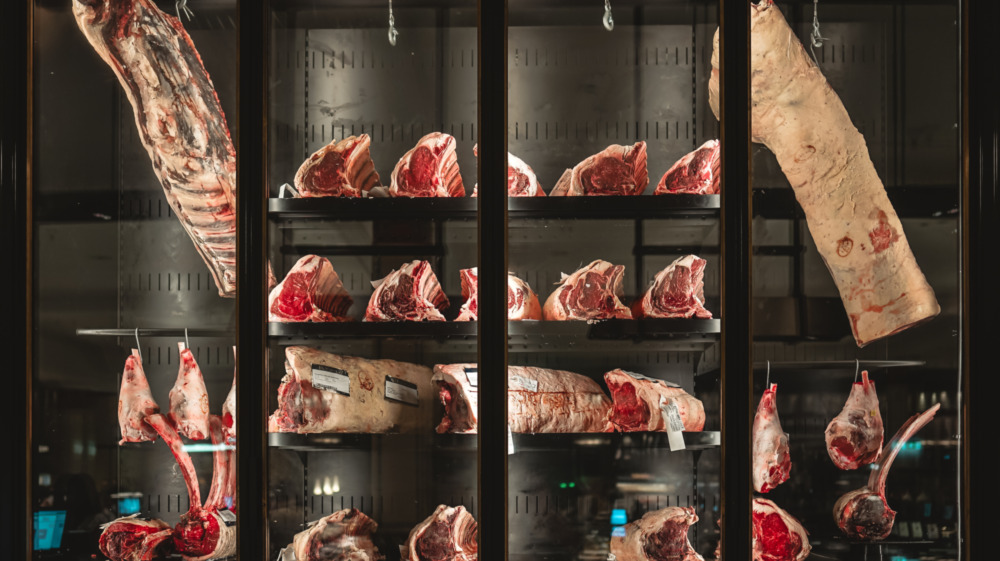
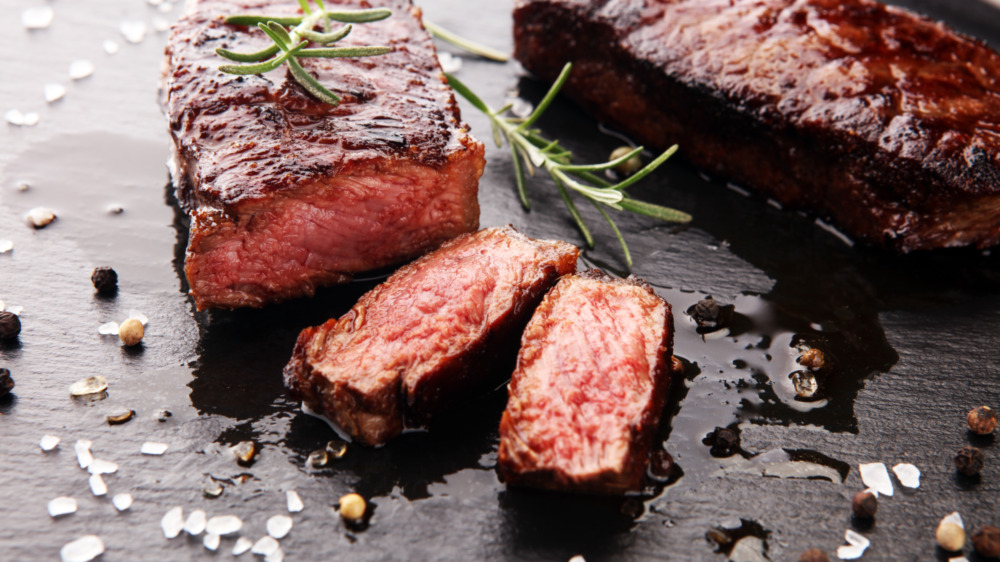
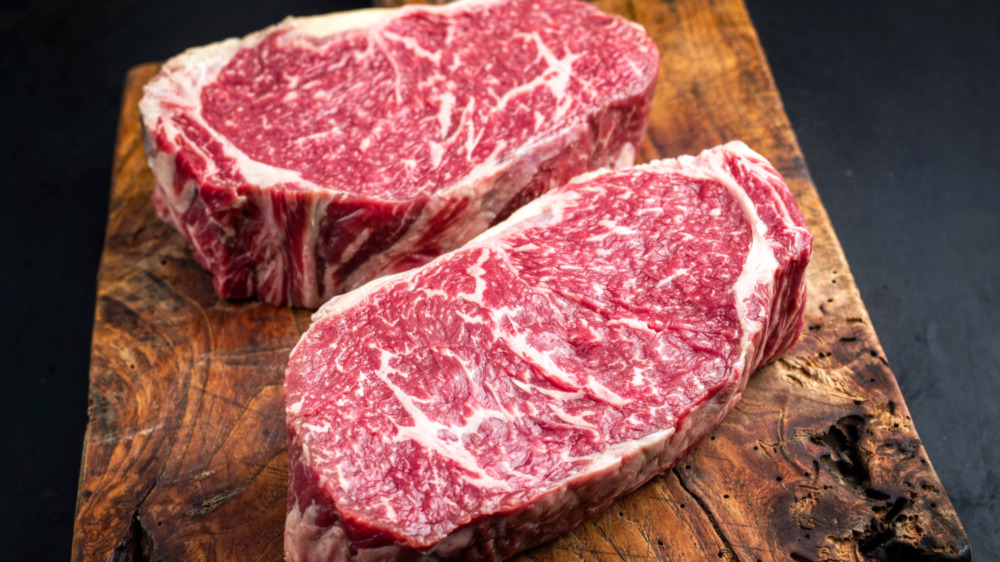
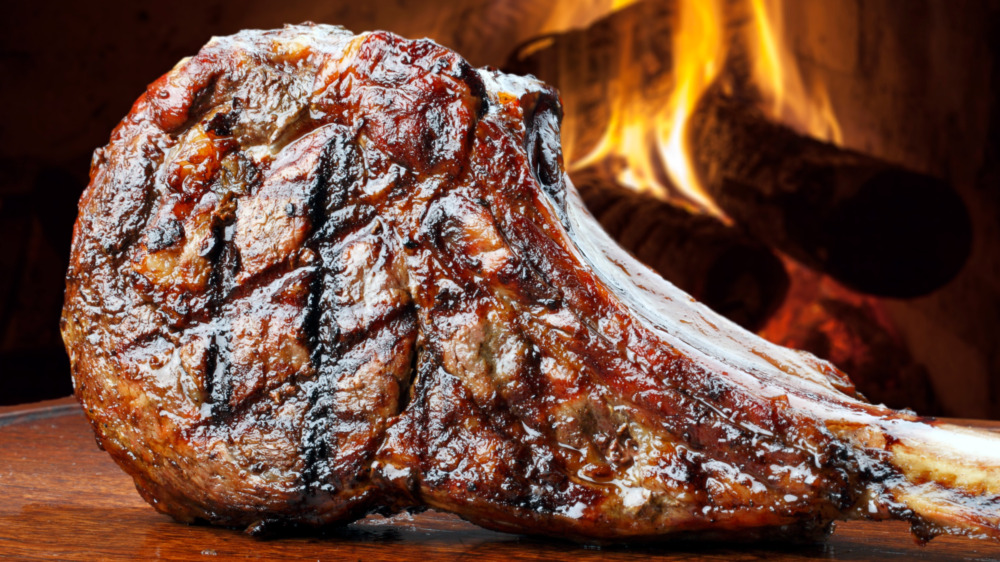
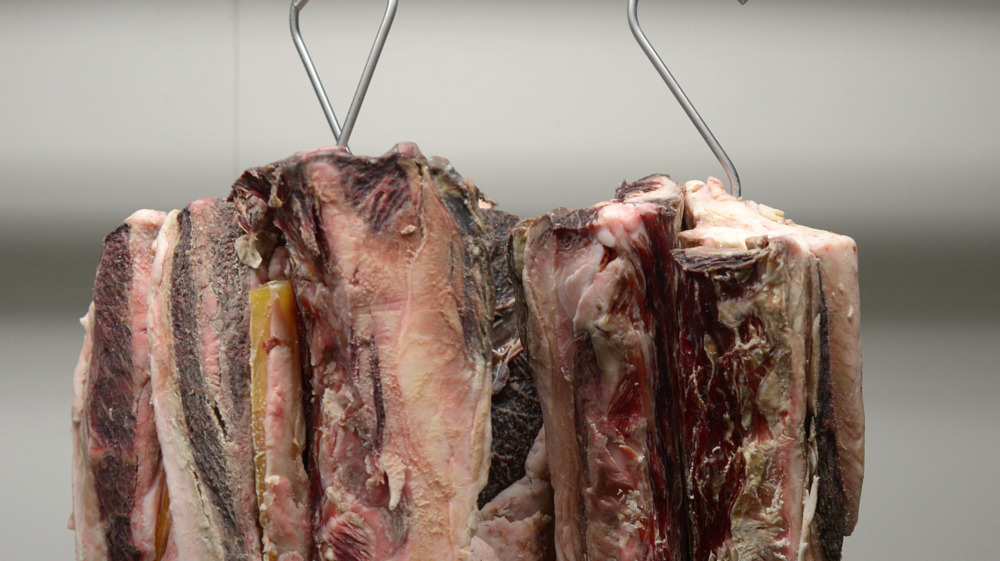
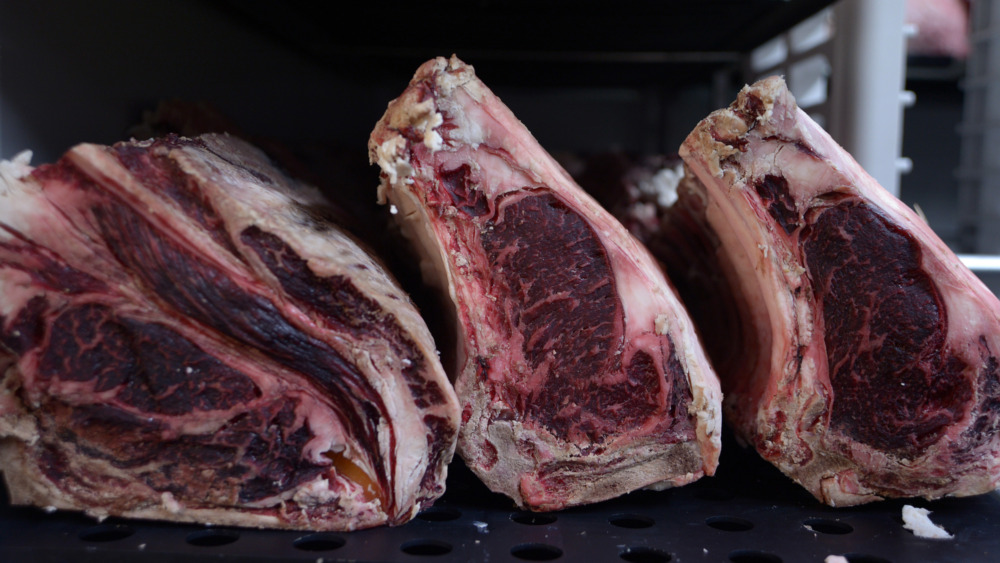
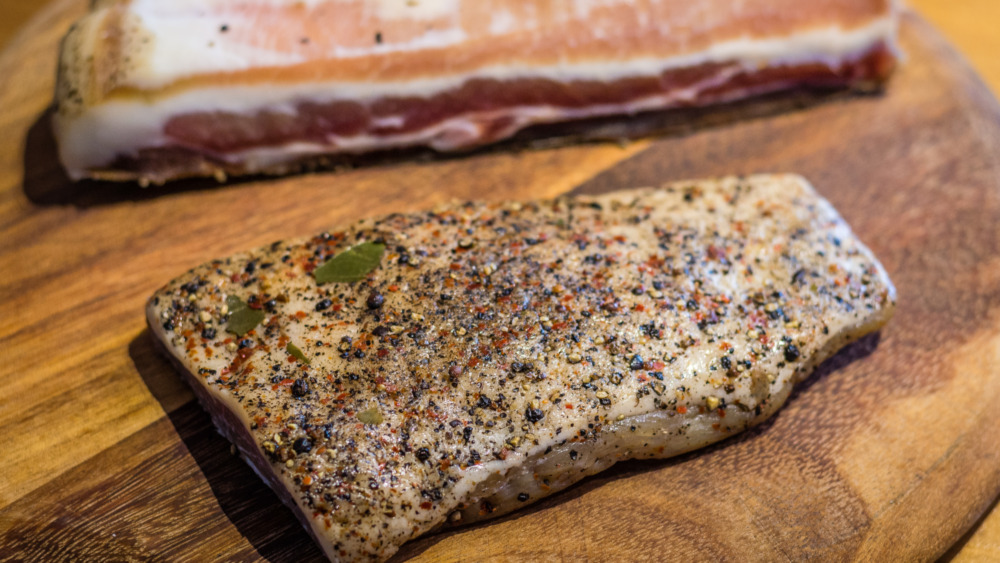
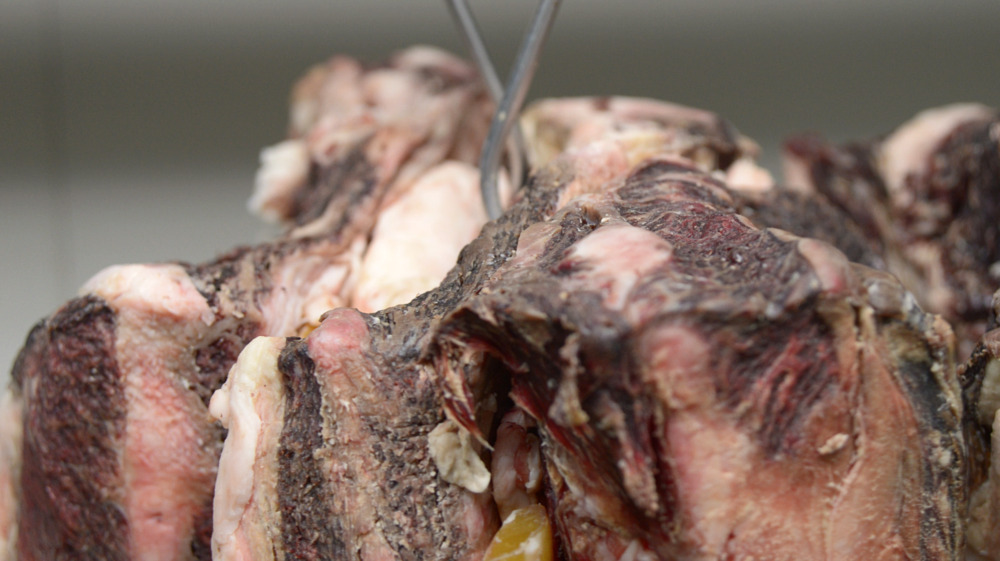
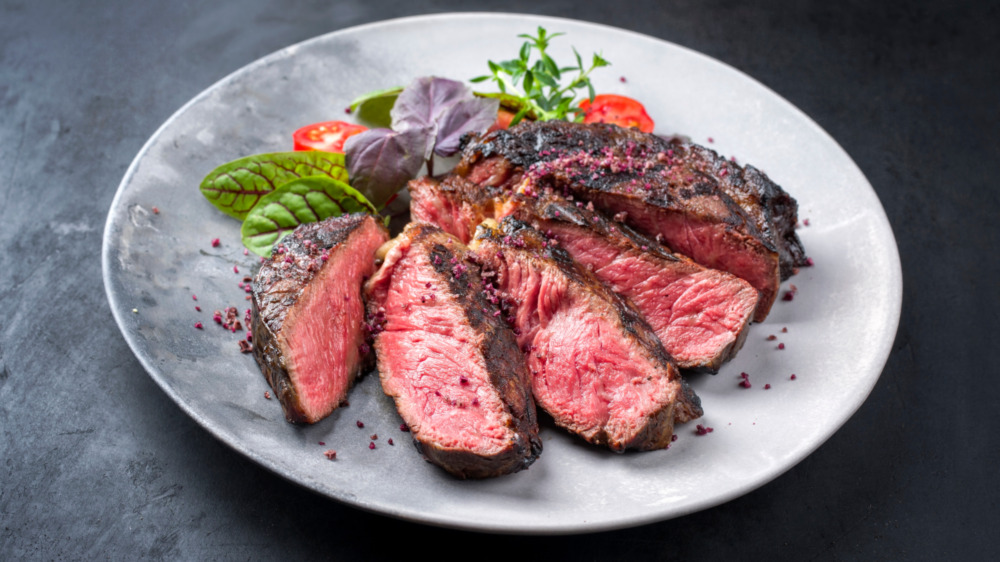
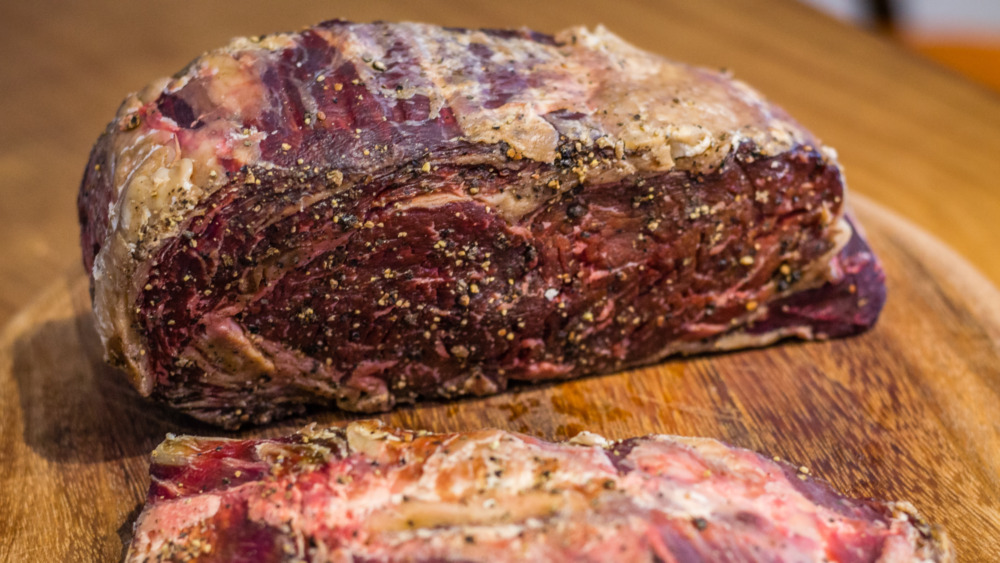
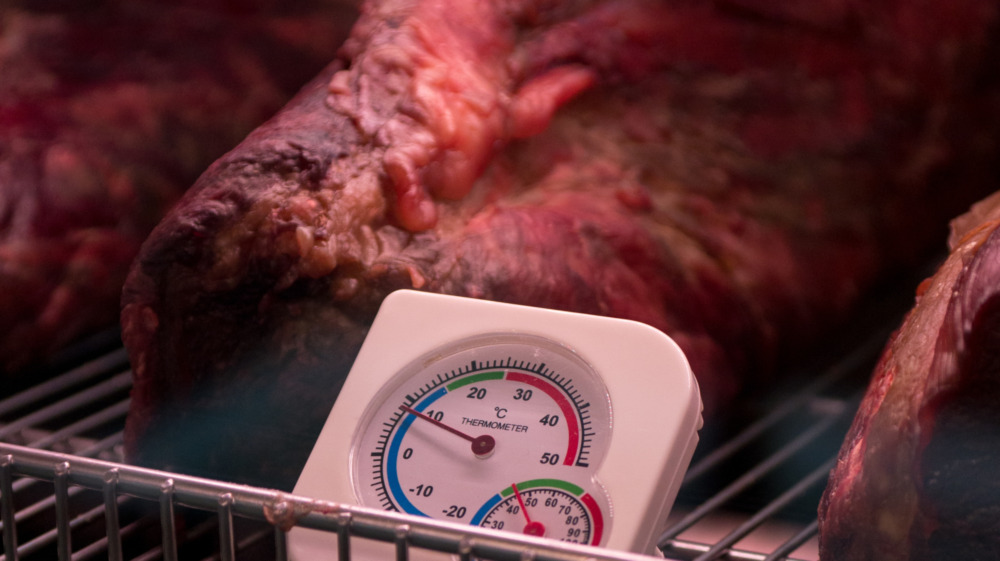
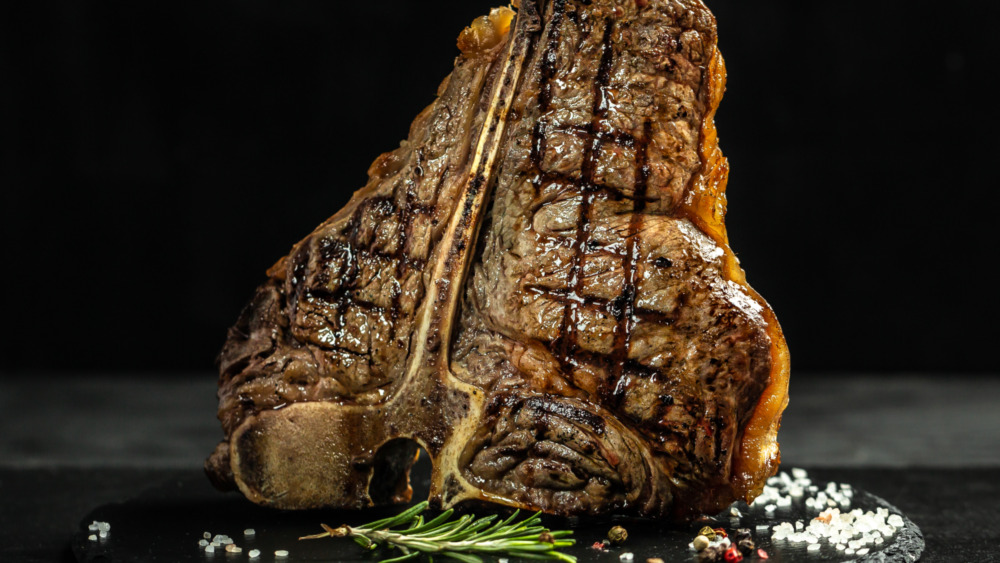
0 Response to "Why Doesn Dry Aged Beef Make You Sick"
إرسال تعليق